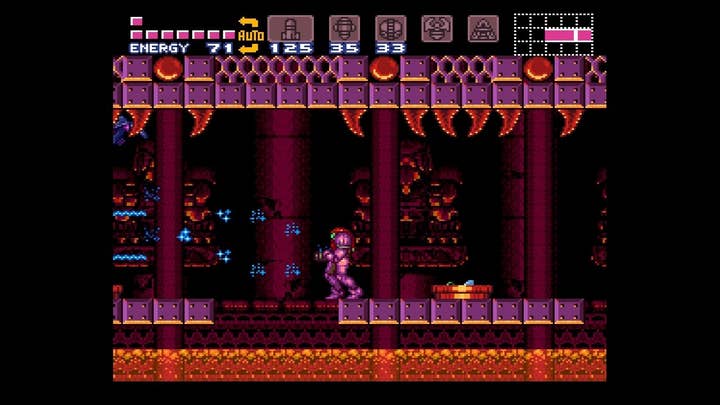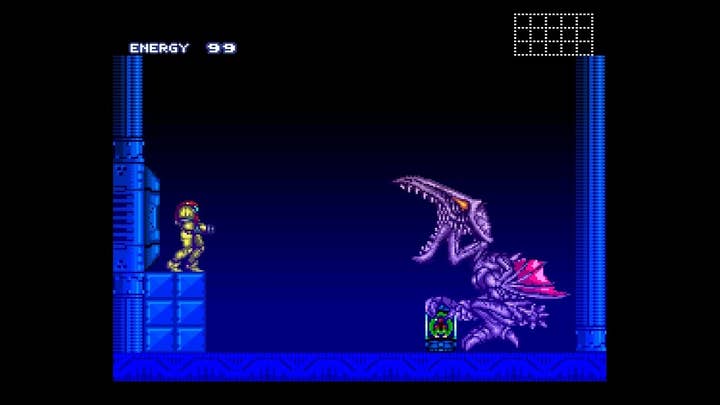Super Metroid knew how to tell a story and set a mood | Why I Love
Decemberborn Interactive's Eric Lavesson explores what keeps bringing him back to the Super Nintendo sequel decades later
Why I Love is a series of guest editorials on GamesIndustry.biz intended to showcase the ways in which game developers appreciate each other's work. This entry was contributed by Eric Lavesson, lead developer at Decemberborn Interactive. Decemberborn's retro-styled Metroidvania Cathedral is out now on Steam and GOG.com, and coming soon to Nintendo Switch.
In the late 80s, when I was 8 years old and had just received an NES for Christmas, a friend brought over the original Metroid. It was unlike anything I had ever seen before. I was used to games being linear, going from left to right, or even being just a single screen. The original Metroid (together with the original Zelda) blew my mind. Being able to make choices, backtrack and explore a world like this was completely new to me.
Sadly, I never finished the original Metroid back then. I spent a lot of time playing it, getting lost, and drawing maps by hand to remember where I had and hadn't been yet, but in the end it was simply too difficult for me.
A couple of years passed, and Nintendo started showing off the SNES. I remember looking at pictures of it in Nintendo Power magazine (or Nintendomagasinet, as the Swedish version was called). The SNES was rather expensive at the time, so when it was released I had to share it with my siblings. A few years into the SNES' lifetime (summer of 1994, to be exact), Super Metroid was released. I remember seeing footage of the game and thinking it looked awesome.
Even though I never finished the original, I still had a lot of fun with it, so I had an idea of what I was in for with Super Metroid. Of course, I had no idea at the time that it would highly influence the way I think of level design when designing my own games.
Today, I can see Super Metroid through two different lenses: as a 12-year-old kid, playing it on the SNES around Christmas and being astonished over how cool everything was, and as a 38-year-old game designer... still being astonished over how cool everything is. It's easier to put into words today though.
Back then, the game was visually impressive. That might not be the case anymore, but the level design holds up just as well. Getting stuck and not having any idea of where to go is not really a problem, because it's part of the formula. The map becomes a central tool that you use to become unstuck, which is a huge difference from the first Metroid game, where you had to jot down where you'd been on a piece of paper. Scouring the map for that place where you haven't been yet but can now access became a puzzle in and of itself!

If you start looking into game design, you'll find a ton of things written about tutorialization -- teaching players the game through deliberate design rather than through text and lengthy explanations. This can be very powerful when done right, but it doesn't need to be used to only learn new mechanics or teach the player something in the beginning of a game.
Deliberate level design is what sets the world of Super Metroid apart; it's more than just a large number of interconnected rooms. Something I have always found interesting is how the world is designed in a way that pushes you to where you need to be, even when you're feeling completely lost. The world is designed in such a way that it "funnels" you to where you need to go, sooner or later. By exploring the world, you always seem to stumble into the area where you're expected to go next. Even though you'll feel lost, you'll still make a surprising amount of progress -- and feel like a genius for your discoveries -- all the while the designers are secretly pulling the string to create this hand-crafted sense of accomplishment.

As you explore the world, you'll gain new abilities, granting access to new terrain, which is a very distinctive feature of any Metroid or Metroid-like game. This is pretty much the meat of the game loop: explore, find new stuff, uncover even more of the world, and repeat. This highly satisfying sense of exploration is why I play these kinds of games.
While there is a lot of lore and story to the world of Metroid, it's up to you how much you engage in it. Except for a single (albeit annoyingly unskippable) cutscene at the beginning of the game, there isn't really that much of an explanation of what's going on. For me, this is a good thing, because this lack of intrusive narrative only strengthens the solitary atmosphere of the experience. You know where you are and why you're there. The intro and the subsequent tutorial at the beginning of the game told it all. You're Samus Aran, you're on planet Zebes, and you need to recover a missing Metroid that Ridley stole.

Armed with this knowledge, it's just pure atmosphere from here on out. You're alone on a dangerous alien planet, and you know exactly what your mission is. There's no need for any explanations or any more backstory in order to enjoy or play the game.
For me, the simplicity of this kicks the atmosphere into overdrive, because I imagine this is what it would be like to be in Samus' shoes. You know just as much as she does, and you're both learning as you go. You need to figure out how to survive, and how to move forward. Especially as a kid, this was immersive beyond anything I had ever played before. Coupled with a fantastic soundtrack, everything in the entire game works as a single unit to deliver this feeling of isolation and forward momentum.
While not entirely comparable, I did get the same feeling to some extent many years later, when playing Dead Space (fighting Necromorphs on the Ishimura felt surprisingly reminiscent to fighting Space Pirates on Zebes) Especially the hopelessness of being alone in a hostile environment, trying to figure out how to handle it all.
What is even more impressive to me, is how Super Metroid built this ambience using mere 2D sprites on 16-bit tech. This combination of atmosphere, level design and a killer soundtrack created an unforgettable experience for me. It's the reason I replay the game every Christmas, appreciating its ingenuity more and more each year.
Developers interested in contributing their own Why I Love column are encouraged to reach out to us at news@gamesindustry.biz.









